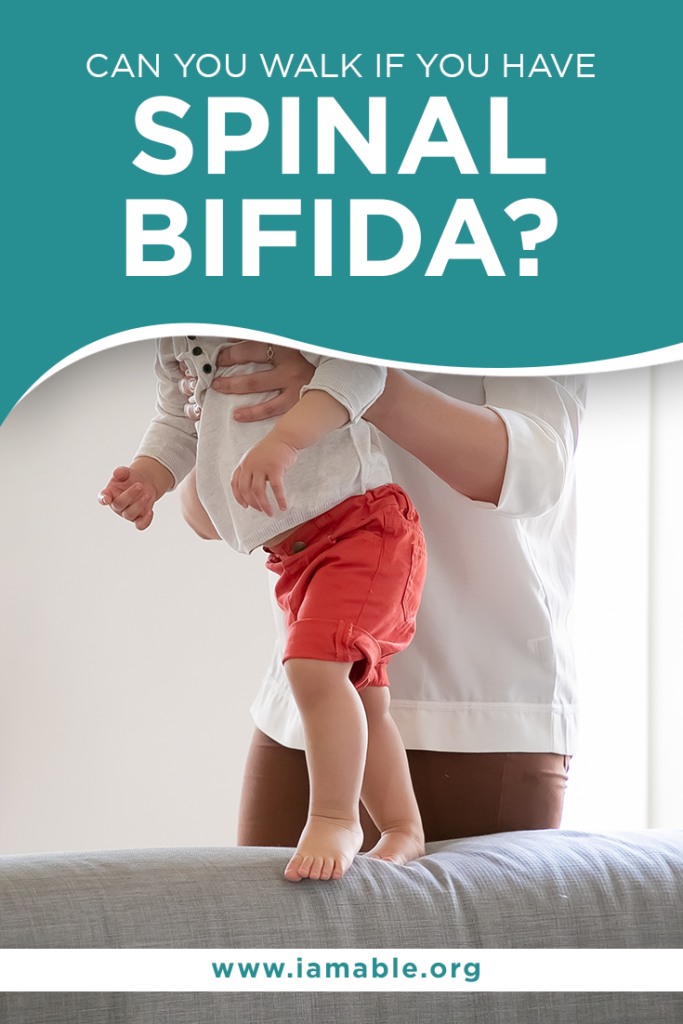Miami, FL 33186

Spinal bifida is a defect that an infant is born with. It affects the spine, and therefore, the central nervous system. Depending on the type and severity of the condition, the child may have varying degrees of disability regarding physical activity and mobility. Can you walk if you have spinal bifida? For most, the answer is yes. However, you may require the assistance of braces, a walker, or crutches.
What determines if a person living with spinal bifida is able to walk without assistance or if they must learn to use a wheelchair? Partially, the determinant is the severity of the condition. However, treatment can also play a significant role in helping a child attain the maximum degree of independence as an adult. For example, gait training exercises should begin as early as it is safe to do so.
Let’s take a closer look at spinal bifida, how it affects a person’s ability to walk, and what treatment options are available. We will conclude by discussing the importance of gait training exercises and the right mental outlook during the therapy process.
No two children will have an identical experience with spinal bifida. For example, someone living with spinal bifida occulta may have few or no symptoms at all. Thus, it is challenging to understand just how prevalent this condition is, as individuals may live with it and not even be aware.
On the other hand, those living with spinal bifida cystica can have a wholly exposed portion of the spinal cord, leading to severe neurological complications. For our article’s purposes today, this is the type of spinal bifida that we are discussing. It is also sometimes called myelomeningocele.
Meningocele is the other type of spinal bifida. This involves enlargement of the spinal cord membrane to create a cyst. Depending on the size and location of the cyst (and if a surgical procedure is appropriate or possible), the resulting symptoms may vary. This is the least common type of spinal bifida.
Another factor is the height of the spine at which spinal bifida occurs. The higher the defect is on the spine, the more likely it is for complications that include some degree of paralysis in the legs. When the defect occurs lower on the spine, there is a greater likelihood that the child will learn to walk along with braces or other assistive devices.
Let’s look at some research that reveals the importance of gait training exercises when a child struggles to walk due to spinal bifida.
A scholarly article on the benefits of starting gait training in the early years of a child’s life sheds some light on why this is such a vital form of care. Consider some of the benefits of starting gait training early when a child is living with spinal bifida.
With all of these benefits and more, you probably will also want to consider a study that shows the advantages of gait training are real. A case study involving a toddler with L4-L5 level damage due to spinal bifida provides encouraging results.
In the study, an 18-month-old receives help using treadmill stepping and overground walking with the addition of a walker. By age 23 months, the child went from not stepping to moving 150 meters with a walker.
Gait training exercises are safest when a professional physical therapist is present. Therefore, you will want to find a rehabilitation center where your child can experience gait training. In southern Florida, the place to go is iAM ABLE.
However, you also want to help your child mentally to meet the challenges of living with a degree of paralysis. For that, you will want to learn all that you can about the challenges and successes your young one can look forward to. We have an eBook with the title 7 Unbelievably Important Steps to Take to Thrive after Paralysis that you will find enlightening. So now you have the answer to the question: Can you walk if you have spinal bifida? The answer is yes, at least for the majority of patients. Even if there is a degree of paralysis, gait retraining exercises can help your young one to maximize their independence and enjoy normal social interactions with other children.
Grab our free e-book 7 Unbelievably Important Steps to Take to THRIVE after Paralysis by clicking the image below.
